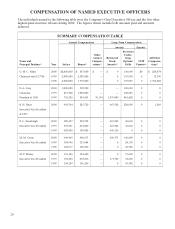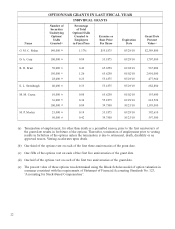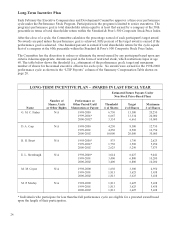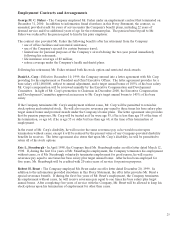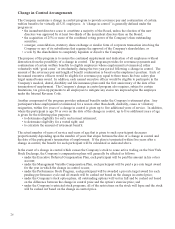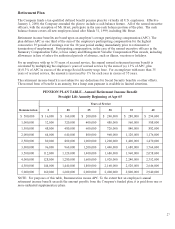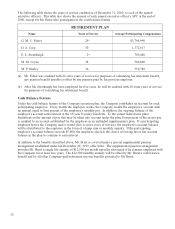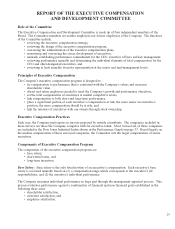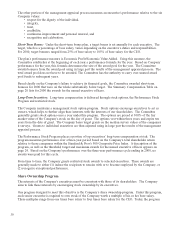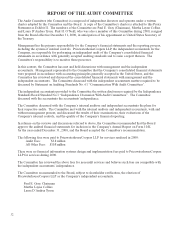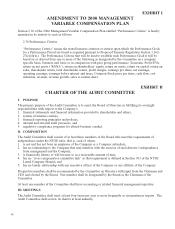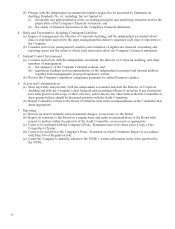Kodak 2000 Annual Report Download - page 102
Download and view the complete annual report
Please find page 102 of the 2000 Kodak annual report below. You can navigate through the pages in the report by either clicking on the pages listed below, or by using the keyword search tool below to find specific information within the annual report.30
The other portion of the management appraisal process measures an executive’s performance relative to the six
Company values:
• respect for the dignity of the individual,
• integrity,
• trust,
• credibility,
• continuous improvement and personal renewal, and
• recognition and celebration.
Short-Term Bonus: Under the short-term bonus plan, a target bonus is set annually for each executive. The
target, which is a percentage of base salary, varies depending on the executive’s duties and responsibilities.
For 2000, target bonuses ranged from 25% of base salary to 105% of base salary for the CEO.
The plan’s performance measure is Economic Profit/Economic Value Added. Using this measure, the
Committee establishes at the beginning of each year a performance formula for the year. Based on Company
performance for the year, this formula determines the size of the award pool for the year. The Committee
awards bonuses from the award pool using in large part the results of the management appraisal process. The
total award pool does not have to be awarded. The Committee has the authority to carry over unused award
pool funds to subsequent years.
Based chiefly on the Company’s failure to achieve its financial goals, the Committee awarded short-term
bonuses for 2000 that were on the whole substantially below target. The Summary Compensation Table on
page 20 lists for 2000 the awards for the named executive officers.
Long-Term Incentives: Long-term compensation is delivered through stock options, the Performance Stock
Program and restricted stock.
The Company maintains a management stock option program. Stock options encourage executives to act as
owners, which helps to further align their interests with the interests of our shareholders. The Committee
generally grants stock options once a year under this program. The options are priced at 100% of the fair
market value of the Company’s stock on the day of grant. The options vest within three years and expire ten
years from the date of grant. The Company bases target grants on the median survey values of the companies
it surveys. Grants to individual executives are then adjusted using in large part the results of the management
appraisal process.
The Performance Stock Program places a portion of top executives’ long-term compensation at risk. The
program measures performance over a three-year period based on the Company’s total shareholder return
relative to those companies within the Standard & Poor’s 500 Composite Price Index. A description of the
program, as well as the threshold, target and maximum awards for the named executive officers appears on
page 24. Based on the Company’s performance over the three-year performance cycle ending in 2000, no
awards were paid for this cycle.
From time to time, the Company grants restricted stock awards to selected executives. These awards are
generally made to either (1) induce the recipients to remain with or to become employed by the Company; or
(2) recognize exceptional performance.
Share Ownership Program
The interests of the Company’s executives must be consistent with those of its shareholders. The Company
aims to link these interests by encouraging stock ownership by its executives.
One program designed to meet this objective is the Company’s share ownership program. Under this program,
each senior executive is required to own stock of the Company worth a multiple of his or her base salary.
These multiples range from one times base salary to four times base salary for the CEO. Today, the program


